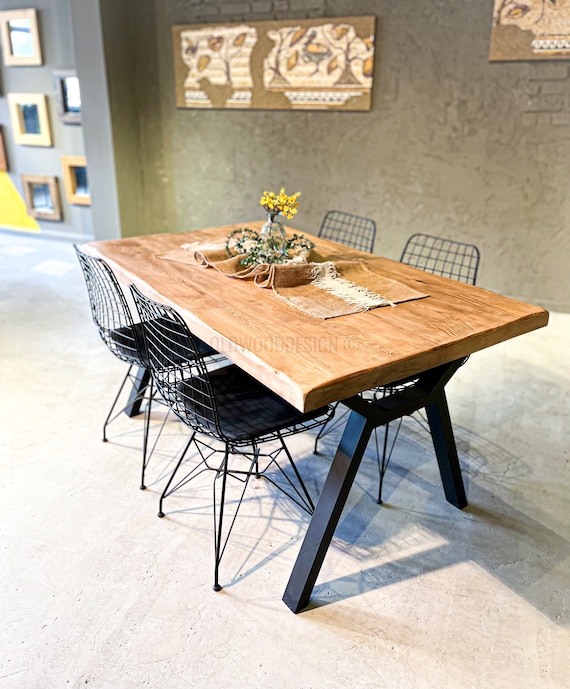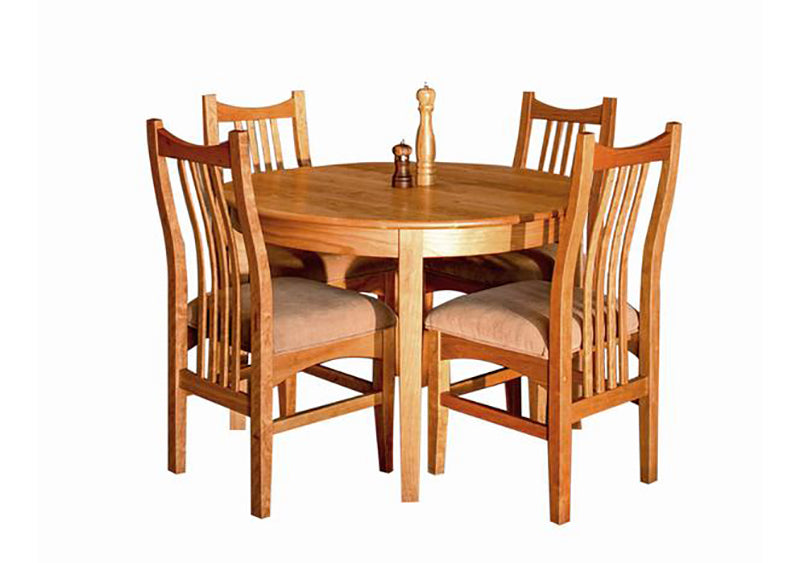Improve Your Dining Room's Aesthetic with High-Quality Dining Table Legs Wood
Improve Your Dining Room's Aesthetic with High-Quality Dining Table Legs Wood
Blog Article
Exploring the Various Kinds Of Table Legs Wood for Your Eating Space
The option of table legs wood can profoundly influence both the aesthetic and useful qualities of your eating area. Strong wood options, such as oak and walnut, supply a timeless look with unrivaled sturdiness, while crafted wood options offer cutting-edge styles that resemble the richness of natural grains. In addition, the growing pattern of reclaimed timber presents a sustainable aspect that attract ecologically conscious customers. As we discover these different alternatives, it becomes necessary to consider not just the visual appeal however also the functional implications of each material selection. What factors should assist your choice?
Strong Wood Options

Unlike engineered materials, solid timber is much less prone to warping and damage over time when correctly maintained. Each piece of strong timber is unique, showcasing individual qualities that add to the beauty and character of the dining table.
Furthermore, strong wood can be completed in countless means, varying from natural oils to stained finishes, permitting property owners to customize their furniture to match their decor. In recap, choosing solid wood for eating table legs not just makes sure structural stability however also boosts the aesthetic charm of the dining area, making it a beneficial investment for any home.
Engineered Timber Alternatives

Plywood, created from several layers of wood veneer, is secure and especially solid, making it an excellent selection for dining table legs. Its layered make-up enables it to withstand adjustments in moisture and temperature far better than conventional solid timber. MDF, on the other hand, uses a smooth surface area for painting or veneering, making it possible for designers to achieve a sleek look while keeping structural integrity.
Particleboard, commonly used in economical options, supplies decent strength and is light-weight, making it easier to manage. However, it might not be as durable as plywood or MDF. It is necessary to take into consideration the designated usage and wanted aesthetic when picking engineered timber options. These products not only enhance the performance of dining spaces however likewise enable higher style adaptability, guaranteeing that modern and traditional designs can exist side-by-side harmoniously.
Reclaimed Wood Includes
Reclaimed wood supplies an unique blend of sustainability and character, making it a progressively popular selection for eating table legs. Sourced from old barns, factories, and various other frameworks, redeemed timber symbolizes a history that new products merely can not replicate. Each piece lugs its very own tale, marked by distinct imperfections, knots, and differing grain patterns, which add to a table's special aesthetic appeal.
Along with its visual beauty, reclaimed timber is an environmentally friendly option. By repurposing formerly used materials, it reduces the need for brand-new lumber, therefore aiding to preserve woodlands and lessen waste. This lines up with a growing customer preference for sustainable techniques in decor.
Additionally, redeemed wood is frequently more resilient than newly gathered timber as a result of its age. The natural drying out process that reclaimed timber undergoes outcomes in a denser and stronger product, making it less at risk to bending and splitting. This boosts the durability of eating tables, allowing them to endure the roughness of everyday usage.
Softwood vs. Hardwood
When selecting dining table legs, comprehending the distinctions between softwood and wood is check it out essential for accomplishing both useful and visual objectives. They generally display a more rustic look, making them ideal for country-style or casual dining areas.
On the other hand, hardwoods, sourced from deciduous trees like cherry, oak, and maple, are renowned for their thickness, toughness, and durability. The intricate grain patterns and rich tones of hardwoods supply a innovative and classic allure, making them excellent for official eating settings. While hardwoods tend to be more pricey and larger, their strength versus damage typically warrants the financial investment.
Eventually, the selection in between softwood and hardwood for eating table legs must line up with your design vision, use needs, and budget, ensuring that your eating area shows your personal design while continuing to be practical in time.

Therapies and surfaces
The visual appeal and long life of table legs can be substantially boosted via go now different surfaces and treatments. These procedures not just safeguard the wood from damages however also elevate its appearance, allowing it to enhance varied indoor styles.
One common therapy is discoloring, which permeates the wood and enhances its all-natural grain while including shade. Spots provide a rich, elegant appearance, enabling homeowners to match their furnishings with existing decoration. On the other hand, clear coatings such as polyurethane or varnish develop a protective layer without altering the wood's original tone, making certain longevity versus damage.
Furthermore, natural oils, like tung or linseed oil, nurture the timber and provide a refined shine, all while being eco-friendly. These oils permit the surface to take a breath, protecting against dampness accumulation and possible bending.
For those seeking a rustic charm, distressed or weather-beaten coatings can be put on develop an aged look, including character to the item. Eventually, the option of treatments find more info and surfaces depends upon individual preference, wanted aesthetics, and the details wood kind, making it important to consider these factors when selecting table legs for your space.
Verdict
Strong timbers, engineered options, and reclaimed choices each deal unique advantages, providing to different choices and requirements. Eventually, the choice of wood kind ought to line up with preferred design, resilience, and ecological factors to consider, improving the general eating experience.
The selection of eating table legs wood can profoundly impact both the functional and visual top qualities of your dining space - Dining Table Legs Wood. Solid timber choices, such as oak and walnut, offer a classic look with unrivaled sturdiness, while engineered timber choices use ingenious designs that simulate the splendor of natural grains. Strong wood supplies a classic top quality that can raise the general layout of a dining space. Each item of strong wood is distinct, showcasing individual qualities that include to the charm and personality of the eating table
Additionally, reclaimed wood is usually extra long lasting than recently collected wood due to its age.
Report this page